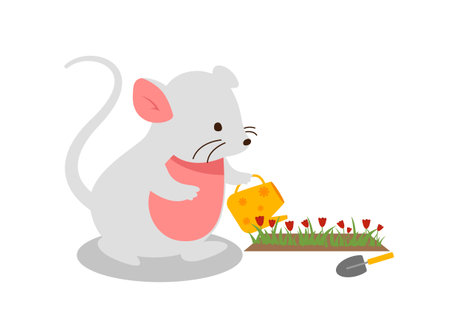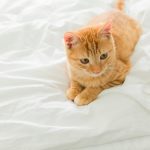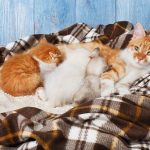Nutritional Differences Between Wet and Dry Cat Food
When choosing the best food for your feline friend, understanding the nutritional differences between wet and dry cat food is essential. Each type has its own benefits and drawbacks, primarily based on protein content, moisture levels, and essential nutrients.
Protein Content
Cats are obligate carnivores, meaning they require a diet rich in animal-based protein. In general, wet cat food tends to have higher-quality protein sources with fewer carbohydrates compared to dry kibble. While dry food can also provide adequate protein, some brands may include more plant-based fillers, which are less beneficial for cats.
Moisture Levels
One of the biggest differences between wet and dry cat food is moisture content. Wet cat food typically contains around 70-80% water, while dry kibble only has about 10%. Since many cats do not drink enough water on their own, feeding wet food can help keep them hydrated and support kidney health.
Essential Nutrients
Both wet and dry cat foods are formulated to meet feline nutritional needs, but there are some variations:
| Nutrient | Wet Cat Food | Dry Cat Food |
|---|---|---|
| Protein | Usually higher quality, animal-based proteins | Adequate protein but may contain more plant fillers |
| Moisture | High (70-80%) – helps with hydration | Low (~10%) – requires sufficient water intake |
| Carbohydrates | Tends to be lower in carbs | Often higher in carbs due to fillers and binding agents |
| Additives & Preservatives | Lesser preservatives due to high moisture content | Tends to have more preservatives for longer shelf life |
| Taurine & Other Nutrients | Packed with essential amino acids like taurine | Nutritionally complete but may require supplementation in some formulas |
Which One Is Right for Your Cat?
The ideal choice depends on your cat’s specific needs. If hydration is a concern or your cat prefers moist textures, wet food may be the better option. On the other hand, if convenience and dental health benefits matter more, dry kibble could be suitable. Some pet owners choose a combination of both to balance nutrition and practicality.
2. Hydration and Its Impact on Your Cats Health
One of the biggest differences between wet and dry cat food is moisture content. Wet food contains significantly more water, which can play a crucial role in keeping your cat hydrated. Since cats naturally have a low thirst drive, they may not drink enough water on their own, making their diet an important source of hydration.
Why Moisture Matters for Your Cat
Proper hydration is essential for your cat’s kidney health, digestion, and overall well-being. Cats that consume primarily dry food may be at a higher risk of developing urinary tract issues and kidney disease due to insufficient water intake. On the other hand, wet food provides additional moisture that supports these vital functions.
Comparison of Moisture Content in Wet vs. Dry Food
| Food Type | Moisture Content |
|---|---|
| Wet Food | 70-80% |
| Dry Food | 5-10% |
The Role of Hydration in Kidney Health
Cats with chronic kidney disease or a history of urinary tract infections can greatly benefit from the added moisture in wet food. Increased water intake helps flush toxins from the kidneys and reduces the risk of crystal formation in the bladder, keeping your feline friend healthier in the long run.
How to Ensure Your Cat Stays Hydrated
If you prefer feeding dry food but are concerned about hydration, consider incorporating wet food into your cat’s diet or encouraging them to drink more water by using a pet fountain. Some cats are more inclined to drink moving water rather than still water from a bowl.

3. Convenience, Storage, and Cost Considerations
When choosing between wet and dry cat food, its important to consider practical aspects like storage, ease of feeding, and cost. Each type has its own advantages and drawbacks in these areas.
Storage and Shelf Life
One of the biggest differences between wet and dry cat food is how they need to be stored. Dry cat food has a much longer shelf life and can be kept in a sealed container for months without spoiling. Wet cat food, on the other hand, requires refrigeration after opening and must be used within a short period.
| Factor | Wet Cat Food | Dry Cat Food |
|---|---|---|
| Shelf Life (Unopened) | A few years (check expiration date) | A few years (check expiration date) |
| Shelf Life (Opened) | Must be refrigerated and used within 24-48 hours | Can last weeks if stored in an airtight container |
| Storage Requirements | Needs refrigeration after opening | No refrigeration needed; store in a cool, dry place |
Ease of Feeding
If youre looking for a more convenient feeding option, dry food may be the better choice. It can be left out for your cat to eat throughout the day without worrying about spoilage. Wet food, however, should not be left out for more than a few hours as it can quickly go bad.
Cost Considerations
The cost of cat food can add up over time, so its worth considering your budget when deciding between wet and dry options. Generally, dry cat food is more affordable per serving compared to wet food. While wet food tends to be pricier due to its higher moisture content and packaging costs, some pet owners find it worth the investment for its health benefits.
| Factor | Wet Cat Food | Dry Cat Food |
|---|---|---|
| Cost per Serving | Tends to be more expensive | More budget-friendly |
| Purchasing Frequency | Bought more frequently due to shorter shelf life | Bought less frequently due to long shelf life |
| Packing Waste | Cans or pouches create more waste | Larger bags produce less waste per serving |
Your decision will ultimately depend on what works best for your lifestyle and budget. If convenience and cost are top priorities, dry cat food may be the better option. However, if you don’t mind the extra storage considerations and are willing to pay a little more for added hydration and nutrition benefits, wet food could be a great choice.
4. Dental Health: Does Dry Food Really Clean Your Cat’s Teeth?
One of the most common beliefs among cat owners is that dry food helps keep their feline’s teeth clean by reducing plaque and tartar buildup. While there is some truth to this idea, it’s not the whole story. Let’s take a closer look at how diet affects your cat’s dental health and what other factors play a role in maintaining their oral hygiene.
Does Dry Food Actually Help with Dental Health?
The thought process behind feeding dry kibble for dental benefits is that the crunchiness helps scrape off plaque as cats chew. However, studies have shown that while some specially formulated dental diets may help reduce plaque, regular dry cat food doesn’t have a significant impact on dental health compared to wet food.
Other Factors That Affect Your Cat’s Oral Hygiene
Dental health isn’t just about what your cat eats. Several other factors contribute to keeping their teeth and gums healthy:
1. Regular Brushing
Brushing your cat’s teeth with a pet-safe toothbrush and toothpaste is one of the best ways to prevent plaque buildup and gum disease.
2. Veterinary Dental Checkups
Routine dental exams allow vets to catch early signs of dental disease and provide professional cleaning if needed.
3. Dental Treats and Toys
Certain dental treats and chew toys are designed to help reduce plaque and promote better oral health.
Comparing Dry vs. Wet Food for Dental Health
| Factor | Dry Food | Wet Food |
|---|---|---|
| Abrasion Effect on Teeth | Mild scraping effect (varies by kibble type) | No abrasive effect |
| Moisture Content | Low (can contribute to dehydration) | High (helps with hydration) |
| Plaque & Tartar Control | Slightly beneficial but not a replacement for brushing | No direct benefit for cleaning teeth |
| Addition of Dental Formulas | Certain brands offer specialized dental kibble | No specific dental formulas available |
The bottom line? While dry food may provide minimal dental benefits, it shouldn’t be relied upon as the sole method for maintaining your cat’s oral health. Instead, incorporating regular brushing, vet checkups, and appropriate dental treats can make a bigger difference in keeping your feline friend’s teeth strong and healthy.
5. Which Option Is Best for Your Cat?
Choosing between wet and dry cat food depends on several factors, including your cat’s age, health conditions, and dietary preferences. Each type has its own benefits and drawbacks, so let’s break it down to help you make the best decision for your feline friend.
Pros and Cons of Wet and Dry Cat Food
| Type | Pros | Cons |
|---|---|---|
| Wet Food | – High moisture content helps with hydration – Easier to chew, great for older cats or those with dental issues – Often more palatable for picky eaters |
– Shorter shelf life once opened – Can be more expensive than dry food – Requires refrigeration after opening |
| Dry Food | – More convenient and has a longer shelf life – Can help with dental health by reducing plaque buildup – Generally more affordable and easier to store |
– Lower moisture content may contribute to dehydration – Some cats may find it less appetizing – Not ideal for cats with kidney or urinary issues |
Choosing Based on Your Cat’s Needs
Kittens (Under 1 Year)
Kittens need high-protein, nutrient-dense food to support their growth. Wet food is often recommended because its easier to chew and provides extra hydration, but a mix of both can also work well.
Adult Cats (1-7 Years)
An adult cat’s diet depends on their activity level and health. Healthy cats can benefit from a combination of wet and dry food to balance hydration and convenience.
Seniors (7+ Years)
Older cats may struggle with dental problems or kidney issues, making wet food a better option due to its softer texture and higher moisture content.
Cats with Health Conditions
- Kidney Disease: Wet food is typically recommended due to its high moisture content.
- Dental Issues: Soft wet food is easier for cats with missing teeth or gum disease.
- Weight Management: Portion control is key; wet food can help regulate calorie intake, while dry food can be used in measured amounts.
The Best Approach: A Balanced Diet
If possible, offering both wet and dry food can provide the best of both worlds. Many cat owners choose to feed wet food in meals while leaving some dry kibble available throughout the day. This approach ensures proper hydration while maintaining the convenience of dry food.
The right choice depends on your cat’s individual needs and preferences. Keep an eye on their health, consult with your vet if needed, and adjust their diet accordingly to keep them happy and healthy!


